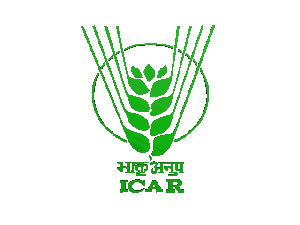Animal husbandry is an integral component of agriculture supporting livelihood of more than two-thirds of the rural population. These sectors also play a significant role in supplementing family incomes and generating gainful employment in the rural sector, besides providing cheap nutritional food to millions of people. Livestock provides milk, egg, meat as nutritious food, draught power for agriculture, wool, fibre, manure and domestic fuel, hides & skin. In 2023, this sector contributed 230.58 million tonnes of milk, 138.38 billion eggs, 33.61 million kg wool, and 9.77 million tonnes of meat to Indian economy. Milk is the main output of livestock sector accounting around two third (67%) of the total output by livestock sector. Meat and egg share 17.5% and 3.6% of the value of livestock output. In 2023, this sector is contributing to the economy in a big way considering the higher rate of growth of the sector in comparison to the general agricultural sector. Presently, the GVA of the Livestock Sector has recorded an annual growth rate of around 6.00% at constant prices. Its contribution to the Indian Agriculture and Indian Economy is increasing steadily with a share of 30.47% in Agriculture & Allied Sector's GVA and 4.75% in the country's total GVA, respectively.. Livestock are the best insurance against the vagaries of nature like drought, famine and other natural calamities.
According to the 2019
Livestock Census, the country had 536.76 million livestock population and 851.81 million poultry population. During 2012-19, cattle and buffalo population has increased 1.34 per cent and 1.06 per cent respectively while sheep increased 14.13%, goat 10.14%, mithun 29.52% and chicken 16.81%. Population of horses, camel, donkey, mule, pig and duck has decreased
Presently, there are 212
registered breeds of livestock and poultry in India which includes
53 breeds of cattle,
20 of buffalo,
44 of sheep,
37 of goat,
7 of horse and ponies ,
9 of camel,
13 of pig,
3 of donkey,
3 of dog,
19 of poultry,
1 of yak,
2 of duck and
1 of geese in addition to many more not characterized and accredited so far, besides populations/breeds of other species like mules, mithuns, quails etc which are yet to be classified in to well descript breeds. The vast and varied population of animals that country possess is indigenous and almost 50% of this population belong to well descript and recognized indigenous breeds of different species. The remaining large proportion of farm animal population is of non-descript native animals which so far have not been characterized systematically.
Indian Council of Agricultural Research (ICAR) has initiated a mechanism for “Registration of Animal Germplasm” at
National Bureau of Animal Genetic Resources (NBAGR), Karnal. This would provide protection to the valuable animal genetic diversity and facilitate its access for genetic improvement of animal breeds. Registration is nothing but a documentation of the knowledge, skills and techniques and, biological resources of local communities.
Conservation strategies can be categorized either as
In-situ conservation or as
Ex-situ conservation.
In-situ conservation primarily involves the active breeding of animal populations in such a way that diversity is optimally utilized in the short term and maintained for the longer term.
In situ models of AnGR conservation have been developed by NBAGR by providing technical inputs and incentives to the farmers/breeders in the breeding tract of respective farm animal breeds.
Ex-situ conservation means conservation away from the habitat and production systems where the resource developed.
National Animal Gene Bank has been established at NBAGR, Karnal. A total of 3,06,948 frozen semen doses belonging to 590 breeding males (Bulls/Rams/Bucks/Stallions) from 63 breeds representing cattle, buffalo, sheep, goat, camel, yak and equine have been preserved at National Gene Bank for posterity.





